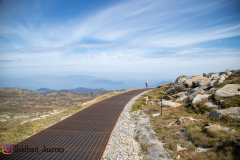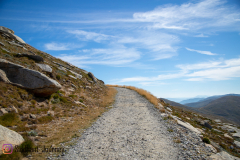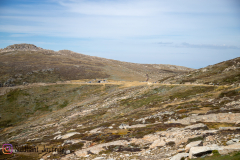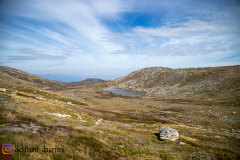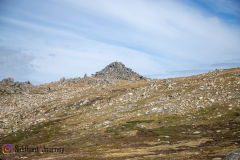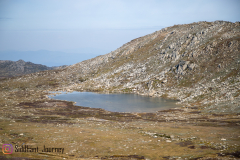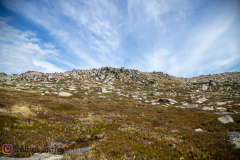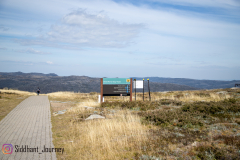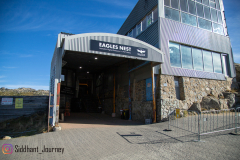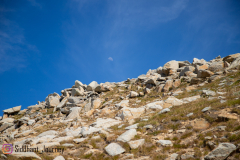Category: NSW Country And Outback
4×4 vs 2WD: Which Vehicle is Ideal for Driving in the Australian Outback?
The Australian Outback is a vast and awe-inspiring landscape known for its rugged terrain, extreme weather conditions, and unique wildlife. Driving in this remote and challenging environment requires careful consideration of the vehicle choice to ensure both safety and efficiency. In this article, we will explore the advantages and disadvantages of 4×4 vehicles and 2WD vehicles for navigating the Australian Outback. By evaluating factors such as off-road performance, safety considerations, fuel efficiency, and practicality, we aim to provide readers with valuable insights to help make an informed decision when it comes to selecting the ideal vehicle for driving in the Australian Outback.
1. Introduction: Understanding the Terrain and Challenges of the Australian Outback
1.1 The vastness and uniqueness of the Australian Outback
Ah, the Australian Outback. A land as vast as your never-ending to-do list and as unique as that one-of-a-kind souvenir you bought on your last vacation. It stretches for miles and miles, captivating adventurers with its rugged beauty and untamed wilderness.
1.2 The rugged terrain and potential obstacles
But don’t be fooled by its breathtaking landscapes. The Outback is not for the faint of heart. Its terrain is as unpredictable as the weather forecast, with rocky outcrops, sandy deserts, and treacherous waterways that can throw even the most seasoned driver off course.
1.3 Importance of vehicle choice for Outback driving
Given the challenges that the Australian Outback presents, choosing the right vehicle for your adventure becomes a crucial decision. It’s like picking the perfect outfit for a first date – you want something that makes you look good and gets the job done without any embarrassing mishaps. So, let’s dive into the comparison between 4×4 and 2WD vehicles and see which one comes out on top.
2. Exploring the Benefits of 4×4 Vehicles in the Outback
2.1 Increased traction and off-road capabilities
When it comes to tackling the wild and unruly Outback, 4×4 vehicles are like the superhero of the road. With power going to all four wheels, these beasts provide better traction, meaning you can conquer steep slopes, sandy surfaces, and muddy tracks with confidence.
2.2 Enhanced stability and control on uneven surfaces
Driving in the Outback can feel a bit like riding a rollercoaster, except without the safety harness. That’s where 4×4 vehicles shine, offering enhanced stability and control on those bumpy, uneven terrains. They handle the dips and bumps like a pro, leaving you feeling less like a shaken cocktail and more like a smooth operator.
2.3 Ability to handle steep inclines and declines
The Outback isn’t afraid to throw some steep hills your way. Fortunately, 4×4 vehicles are built to take on these challenges head-on. With their impressive hill-climbing and descent control features, you can conquer those intimidating slopes without breaking a sweat. It’s like having your own personal cheerleader, cheering you on with every ascent and descent.
3. Evaluating the Advantages of 2WD Vehicles for Outback Driving
3.1 Higher fuel efficiency and lower cost of ownership
If you’re the kind of person who cringes at the thought of spending a small fortune on fuel, then 2WD vehicles might be your saving grace. Thanks to their simpler drivetrain, these vehicles tend to be more fuel-efficient than their 4×4 counterparts. Plus, they often come with a lower price tag, which means more money in your pocket for those Australian souvenir magnets.
3.2 Smooth ride quality on well-maintained roads
Let’s face it – not every Outback adventure involves getting down and dirty in the muddiest of terrains. Sometimes, you just want to take a leisurely drive along a well-maintained road, soaking in the beauty of the surroundings without worrying about every pebble on the path. In these situations, 2WD vehicles tend to offer a smoother, more comfortable ride compared to their 4×4 siblings.
3.3 Maneuverability in urban areas and easier parking
Now, let’s not forget about life beyond the Outback. When you’re back in civilization, navigating urban areas can be a challenge of its own. In this regard, 2WD vehicles have the upper hand, with their lighter weight and more compact size making them easier to maneuver through the concrete jungles. Plus, finding a parking spot becomes a breeze with a 2WD vehicle, saving you from the frustration of circling the block for what feels like an eternity.
4. Comparing Off-Road Performance: 4×4 vs 2WD
4.1 Tackling sandy and loose surfaces
When it comes to sandy and loose surfaces, 4×4 vehicles have the advantage. With power distributed to all four wheels, they dig in and power through the sand like a digger at a construction site. 2WD vehicles, on the other hand, might find themselves stuck faster than a kangaroo mid-hop. So, if you’re planning on some serious dune bashing, a 4×4 is the way to go.
4.2 Navigating through rocky terrains
Rocky terrains can be a real headache for any vehicle, but 4x4s are equipped to handle these challenges. With their higher ground clearance and rugged suspension, they can crawl over rocks like a spider on a web. 2WD vehicles, however, might find themselves scraping their undercarriage and inching along at a snail’s pace. So, if you’re planning on taking the road less traveled, a 4×4 will be your trusty companion.
4.3 Crossing waterways and handling mud
Ah, the great outdoors and its waterways. Crossing these can be a daunting task, especially for those without the right equipment. 4×4 vehicles often come with waterproofing features and higher air intakes to handle the murky challenges of water and mud. While 2WD vehicles might have to sit this one out or risk a not-so-refreshing dip in the river. So, if you’re planning on channeling your inner amphibian, a 4×4 is the answer.
Now that you’re armed with the knowledge of 4×4 and 2WD vehicles, you can make an informed decision about which one suits your Outback adventure best. Remember, whether you choose to conquer the great unknown or stick to the well-paved roads, the most important thing is to enjoy the journey and embrace the spirit of exploration. Happy driving, mate!the outback
5. Safety Considerations: Which Vehicle Offers Better Protection in the Outback?
Let’s face it, safety should always be a top priority when venturing into the wild and rugged Australian Outback. When it comes to protection, 4×4 vehicles have the upper hand over their 2WD counterparts. With enhanced stability and reduced risk of rollovers, 4×4 vehicles provide a safer driving experience in challenging terrains. This is especially important when traversing uneven surfaces and tackling steep slopes, where a 2WD vehicle may struggle to maintain control. Additionally, modern 4×4 vehicles come equipped with advanced safety features, adding an extra layer of protection for you and your passengers. However, it’s crucial to remember that vehicle maintenance plays a significant role in ensuring your safety. Regularly checking and servicing your vehicle can help prevent breakdowns and minimize the risk of accidents.
6. Fuel Efficiency and Cost Factors: Analyzing the Economic Aspects of 4×4 and 2WD Vehicles
If you’re concerned about fuel efficiency and the cost of ownership, the decision between a 4×4 and a 2WD vehicle becomes a crucial one. Generally, 4×4 vehicles tend to consume more fuel compared to their 2WD counterparts. The additional drivetrain components and weight contribute to higher fuel consumption. On top of that, 4×4 vehicles often require specialized maintenance and repairs, which can be pricier than those for 2WD vehicles. However, it’s important to consider the resale value and long-term financial implications. 4×4 vehicles tend to hold their value better in the market, and if you plan on venturing further into the Outback in the future, the capabilities of a 4×4 might outweigh the initial higher costs.
7. Practical Considerations: Accessibility, Maintenance, and Repairs in the Australian Outback
One of the practical aspects to consider when choosing a vehicle for the Australian Outback is accessibility to repair services. In remote areas, it may be challenging to find repair shops that specialize in 4×4 vehicles. On the other hand, 2WD vehicles are more common and easier to repair due to their simpler drivetrain. Additionally, accessibility becomes a significant factor when exploring the Outback. While 4×4 vehicles are designed to tackle rough terrains and provide better off-road capabilities, 2WD vehicles can still access many popular tourist spots and well-maintained gravel roads. Finally, consider maintenance and repairs. 4×4 vehicles often require specialized maintenance, but with proper care and attention, they can provide reliable performance in the Outback.
8. The Fun Factor: Which Vehicle Offers a More Adventurous Experience in the Australian Outback?
Now, let’s talk about the fun factor! If you’re an adventure enthusiast seeking an adrenaline rush, a 4×4 vehicle is your ticket to excitement in the Australian Outback. With their off-roading capabilities, 4×4 vehicles can tackle rugged terrains and conquer challenging obstacles, creating unforgettable memories. On the other hand, a 2WD vehicle can still offer a great experience, allowing you to explore remote locations and enjoy the scenic beauty of the Outback. While it may not have the same thrill as a 4×4, the simplicity and accessibility of a 2WD vehicle bring their own charm. So, whether you’re a thrill-seeker or prefer a more laid-back adventure, the choice between a 4×4 and a 2WD ultimately depends on your preference and the type of experience you’re looking for.
8. Conclusion: Making an Informed Decision for Outback Driving
In conclusion, choosing between a 4×4 and a 2WD vehicle for driving in the Australian Outback depends on various factors, including the terrain, driving preferences, safety considerations, and economic factors. While 4×4 vehicles offer enhanced off-road capabilities and increased stability, 2WD vehicles excel in fuel efficiency and cost-effectiveness. Ultimately, it is crucial to assess individual needs and priorities when deciding on the ideal vehicle for Outback driving. By considering the insights and information provided in this article, you can make a well-informed decision that best suits your requirements and ensures an enjoyable and safe experience exploring the vast beauty of the Australian Outback.
FAQ
1. Is a 4×4 vehicle necessary for driving in the Australian Outback?
While a 4×4 vehicle offers superior off-road capabilities and can handle the rugged terrains of the Outback, it may not be necessary for all areas. Well-maintained roads and popular tourist destinations can often be reached with a 2WD vehicle. However, if you plan to venture into more remote and challenging areas, a 4×4 vehicle is highly recommended for safety and better handling.
2. Are 4×4 vehicles more expensive to maintain and repair?
Generally, 4×4 vehicles are associated with higher maintenance and repair costs compared to 2WD vehicles. The complexity of the drivetrain, additional components, and specialized parts contribute to this. However, regular maintenance, proper servicing, and responsible off-road driving can help minimize repair expenses in the long run.
3. Are there any safety concerns with 2WD vehicles in the Outback?
While 2WD vehicles can be safe for driving in the Outback, there are certain limitations to consider. Their lower ground clearance and traction can make them more susceptible to getting stuck in sandy or muddy terrains. It’s essential to exercise caution, choose well-maintained routes, and plan accordingly when driving a 2WD vehicle in the Outback.
4. Can 4×4 vehicles be driven on regular roads in urban areas?
Yes, 4×4 vehicles can be driven on regular roads in urban areas just like any other vehicle. However, it’s important to keep in mind that their larger size and weight may require more parking space and maneuvering considerations. Additionally, some 4×4 vehicles may have a larger turning radius, so familiarizing yourself with the vehicle’s dimensions is advisable.
Navigating Remote Areas: GPS and Maps for Driving in the Australian Outback
Driving in the vast and rugged landscape of the Australian Outback is a unique and exhilarating experience. However, it also comes with its own set of challenges, particularly when it comes to navigation. With limited infrastructure, harsh weather conditions, and vast distances between settlements, it is crucial for travelers to have reliable tools and techniques for navigating remote areas. This article explores the importance of GPS technology and maps in driving through the Australian Outback, providing valuable insights and tips for a successful journey. Whether you are embarking on an adventurous road trip or venturing off the beaten path, understanding how to navigate effectively in the Outback is essential for a safe and enjoyable experience.
1. Introduction to driving in the Australian Outback
1.1 The allure of the Australian Outback
Ah, the Australian Outback. A vast expanse of rugged beauty, where red dirt stretches for miles and kangaroos hop freely. It’s the stuff of legends, captivating the imagination of adventure seekers around the world. But before you embark on your epic road trip through this remote paradise, it’s important to understand the unique challenges that come with driving in the Outback.
1.2 Unique challenges of driving in remote areas
Driving in the Australian Outback is not for the faint of heart. It’s a land of extremes – extreme temperatures, extreme distances, and extreme isolation. The lack of infrastructure and services means you’ll need to be self-reliant and well-prepared. From unpredictable weather conditions to encountering wildlife on the road, navigating remote areas requires a different set of skills and tools.
2. Understanding the challenges of navigating remote areas
2.1 Limited infrastructure and services
In the Outback, you won’t find a Starbucks on every corner or a gas station every few miles. The infrastructure and services are few and far between. If you’re used to relying on Google Maps to find the nearest restroom or a roadside diner, you’re in for a surprise. Fuel stations, rest areas, and other amenities may be hours apart, so careful planning is essential.
2.2 Harsh weather conditions
Mother Nature doesn’t mess around in the Outback. Dust storms, flash floods, scorching heat, and sudden temperature drops are just a few of the weather phenomena you might encounter. These conditions can make driving treacherous and unpredictable. It’s crucial to check weather forecasts, carry appropriate supplies, and be prepared to adjust your plans if conditions become too hazardous.
2.3 Vast distances and sparse population
Did you know that the Outback covers over 70% of Australia? That’s a whole lot of empty space. In some areas, you might drive for hours without seeing another soul. It’s not just the vast distances that can make you feel like a speck in the desert – the sparse population means you won’t have easy access to help if something goes wrong. It’s important to have reliable communication methods and be prepared to be your own rescuer if needed.
3. The importance of GPS technology for driving in the Outback
3.1 How GPS technology works
Thank goodness for technology! GPS (Global Positioning System) has become a lifeline for travelers navigating through the Outback. By using signals from satellites, GPS devices can determine your precise location anywhere on Earth. It’s like having a virtual co-pilot guiding you through the wilderness.
3.2 Benefits of using GPS in remote areas
GPS is a game-changer when it comes to driving in remote areas. With GPS, you can plot your route, track your progress, and even receive real-time updates about road conditions and traffic. It eliminates the need for paper maps (goodbye, unfolding disasters) and gives you the confidence to explore uncharted territory. Just remember to keep an eye on your GPS battery life – losing signal in the middle of nowhere is not an ideal situation.
4. Choosing the right GPS device for Outback travel
4.1 Factors to consider when selecting a GPS device
Not all GPS devices are created equal, especially when it comes to navigating the Outback. When choosing a device, consider factors such as durability, battery life, and ease of use. It’s also worth checking if the device has preloaded maps of the Outback or the option to download them. The last thing you want is to end up in a remote dead-end because your GPS doesn’t have up-to-date information.
4.2 Recommended GPS features for Outback navigation
In addition to basic navigation, there are a few extra features that can come in handy when driving in the Outback. Look for a GPS device with offline navigation capabilities, as you may encounter areas with limited or no cellular signal. It’s also helpful to have a device with a large screen for easy visibility and voice-guided directions to keep your eyes on the road.
Remember, even with the best GPS device, it’s always a good idea to have a backup plan. Carry physical maps, a compass, and make sure someone knows your travel itinerary. With a little preparation and the right tools, you’ll be well-equipped to conquer the Australian Outback and create memories that will last a lifetime. Safe travels, mate!
Navigating Remote Areas: GPS and Maps for Driving in the Australian Outback
5. Preparing and updating maps for remote areas
5.1 Offline maps and map downloading
When venturing into the vast and remote regions of the Australian Outback, reliable maps are a must. However, don’t rely solely on your smartphone’s internet connection, as you’re likely to face areas with little to no signal. Instead, prepare by downloading offline maps before you set off on your adventure. This way, you’ll have access to crucial navigation information even when you’re off the grid.
5.2 Updating and syncing maps
Maps are not static, especially in remote areas where roads and routes can change due to natural factors or closures. Stay up to date by regularly checking for map updates and syncing them with your navigation device. This will ensure you have accurate and reliable information, even in the ever-changing wilderness of the Outback.
6. Essential safety tips for driving in the Australian Outback
6.1 Carrying essential supplies and emergency equipment
When embarking on a journey through the Australian Outback, it’s crucial to be prepared for any situation. Pack essential supplies such as water, food, first aid kits, and extra fuel. Additionally, equip your vehicle with emergency equipment like a spare tire, jack, and recovery tools. Remember, in the Outback, it’s better to be overprepared than underprepared.
6.2 Understanding local regulations and permits
Each region in the Australian Outback may have its own set of regulations and permits. Familiarize yourself with the local rules and requirements before you begin your drive. This will help you avoid unnecessary fines and ensure you’re respecting the delicate ecosystem of the Outback.
6.3 Communicating and sharing itinerary with others
One of the golden rules of traveling in remote areas is to let someone know about your plans. Share your itinerary with a trusted friend or family member and provide regular updates on your progress. In case of an emergency, they’ll have an idea of your whereabouts and can alert authorities if necessary.
7. Navigating off-road and unmarked trails
7.1 Using waypoints and landmarks for navigation
In the Australian Outback, where roads may be scarce or non-existent, traditional navigation methods can come in handy. Use waypoints and landmarks to guide your way through off-road trails. Rock formations, distinctive trees, or unique natural features can serve as reliable markers, helping you stay on track even in the remotest areas.
7.2 Tips for off-road navigation and trailblazing
When driving off-road, it’s essential to approach it with caution. Maintain a slow and steady pace, as sudden maneuvers can lead to getting stuck or damaging your vehicle. Always pay attention to the terrain, and if you’re unsure about an obstacle or route, get out of the vehicle and assess the situation before proceeding. Remember, it’s better to take your time than to rush into trouble.
8. Exploring alternative navigation tools for remote areas
8.1 Traditional maps and compass navigation
While GPS systems and digital maps are convenient, it’s wise not to rely solely on technology in remote areas. Equip yourself with traditional maps and a compass as backup navigation tools. These analog methods can be lifesavers when technology fails or batteries die.
8.2 Utilizing satellite phones and radio communications
In areas with little to no cellular reception, satellite phones and radios can be your lifeline. Invest in reliable communication devices that work through satellites or long-range radios. This way, you can reach help in case of emergencies or stay connected with other travelers in the Outback.
Remember, exploring the Australian Outback is an unforgettable adventure, but it requires careful planning and preparation. With the right maps, safety measures, and a sense of adventure, you’ll be well-equipped to navigate the vast and awe-inspiring landscapes of the remote Outback.In conclusion, navigating remote areas in the Australian Outback requires careful preparation and the right tools. GPS technology and accurate maps play a vital role in ensuring a smooth and safe journey through this vast and challenging landscape. By understanding the unique challenges of driving in remote areas, choosing the right GPS device, and staying updated with maps, travelers can navigate with confidence. Remember to prioritize safety, follow essential tips, and explore alternative navigation tools when required. With the right knowledge and preparation, driving in the Australian Outback can be an unforgettable adventure filled with breathtaking scenery and remarkable experiences.
FAQ
1. Can I rely solely on GPS technology for navigation in the Australian Outback?
While GPS technology is incredibly useful for navigation in remote areas, it is always recommended to have backup navigation tools. GPS devices can sometimes lose signal or encounter technical issues. It is advisable to carry traditional maps, a compass, and have a general understanding of navigation techniques to ensure you can navigate effectively even without GPS.
2. How do I update maps for remote areas?
Updating maps for remote areas can be challenging as these regions often lack internet connectivity. Before embarking on your journey, download offline maps for the areas you plan to traverse. Additionally, consider obtaining updated paper maps and guidebooks specific to the Australian Outback. These physical resources can provide valuable information and serve as a backup when digital maps are not accessible.
3. What safety precautions should I take when driving in the Australian Outback?
When driving in the Australian Outback, it is crucial to prioritize safety. Carry essential supplies such as water, food, extra fuel, and an emergency kit. Familiarize yourself with local regulations and permits, as well as any specific safety guidelines for the areas you plan to visit. Inform others about your itinerary and check in regularly. Finally, consider investing in a satellite phone or radio communication device for emergencies and staying connected in areas with limited or no cellular coverage.
Preparing Your Vehicle for a Trip to the Australian Outback
Venturing into the vast and rugged Australian Outback is a thrilling and awe-inspiring experience like no other. However, this unique and challenging environment demands careful preparation to ensure a safe and enjoyable journey. From understanding the harsh climate to equipping your vehicle with the necessary supplies, there are several crucial steps to take before embarking on an Outback adventure. In this article, we will guide you through the essential considerations and precautions to take, from conducting a thorough vehicle inspection to navigating remote areas and planning your route. By following these guidelines, you can embark on a memorable and trouble-free journey into the heart of the Australian Outback.
Preparing Your Vehicle for a Trip to the Australian Outback
1. Understanding the Unique Challenges of the Australian Outback
1.1 The Harsh Climate and Extreme Temperatures
The Australian Outback is no place for delicate vehicles. With scorching temperatures and a harsh climate, it’s essential to ensure your vehicle is up to the challenge. From engine overheating to tire blowouts, the Outback can put your vehicle through its paces.
1.2 Unpredictable Weather Conditions
Mother Nature likes to keep things interesting in the Outback. From sudden downpours that turn dusty roads into slippery mud traps to intense dust storms that reduce visibility to zero, you never know what weather conditions you’ll encounter. Prepare for anything and everything!
1.3 Remote and Isolated Locations
The Outback is known for its vast stretches of uninhabited land. It’s crucial to understand that help may not be readily available in case of an emergency. If your vehicle breaks down in the middle of nowhere, you might be on your own for quite some time.
2. Conducting a Thorough Vehicle Inspection
2.1 Checking the Engine and Components
Before embarking on an Outback adventure, make sure your engine is in tiptop shape. Ensure all fluids are topped up, filters are clean, and belts are intact. Consider getting a professional inspection to catch any potential issues before they become roadside disasters.
2.2 Assessing the Tires and Suspension
Your tires are your best friends on rugged Outback roads, so treat them right. Check the tread depth, ensure they’re properly inflated, and inspect them for any signs of wear and tear. Also, don’t forget about your suspension – the Outback’s bumps and dips can take a toll on it!
2.3 Inspecting the Brakes and Lights
Properly functioning brakes and lights are essential for your safety in any driving condition, but they become even more critical in remote areas. Make sure your brake pads and discs are in good condition, and test all your lights to ensure they’re bright and visible.
3. Essential Supplies and Equipment for Outback Travel
3.1 Packing Sufficient Food and Water
When venturing into the Outback, think like a Boy or Girl Scout and be prepared. Pack enough food and water to sustain you in case of unexpected delays or getting temporarily lost. Hydration and nutrition are crucial for staying sharp and maintaining your energy levels.
3.2 Carrying Basic Camping and Survival Gear
Even if you don’t plan on camping, having basic camping and survival gear is a wise move. A sturdy tent, sleeping bag, cooking equipment, and a first aid kit can make all the difference in case you find yourself stranded or needing shelter for the night.
3.3 Emergency Communication Devices
In remote areas, cell phone reception can be as scarce as a cool breeze. Don’t rely solely on your smartphone for communication. Invest in a good quality UHF radio or satellite phone to ensure you can call for help if needed. It’s better to be safe than sorry!
4. Navigating Remote Areas and Planning Your Route
4.1 Researching and Mapping Outback Routes
The Outback offers an array of enticing routes, but not all are suitable for every vehicle. Research and choose a route that matches your vehicle type and your driving skills. Consult travel guides, online forums, and local authorities for the latest information and advice.
4.2 Identifying Fuel and Water Stops
Fuel and water are your lifelines in the Outback, so plan your stops accordingly. Mark fuel stations and water sources along your route to ensure you can refuel and stay hydrated. It’s better to have more than enough than risk running out in the middle of nowhere!
4.3 Preparing for Off-Roading Challenges
Off-roading is inevitable in the Outback, so make sure your vehicle is equipped for it. Consider upgrading your suspension, fitting protective underbody plates, and investing in quality off-road tires. And remember, it’s not a race – take it slow and steady to avoid unnecessary mishaps.
Now that you’re armed with the knowledge to prepare your vehicle for an unforgettable Outback adventure, go forth and conquer the vast Australian wilderness. Just remember to pack your sense of humor because you never know what the Outback might throw at you – both literally and figuratively!
5. Safety Precautions and Emergency Preparedness
Traveling to the Australian Outback can be an exciting adventure, but it’s important to prioritize safety. Here are some key safety precautions and emergency preparedness tips to keep in mind:
5.1 First Aid Kits and Medications
Pack a well-stocked first aid kit that includes essential items such as bandages, antiseptic ointment, pain relievers, and any necessary prescription medications. It’s also a good idea to familiarize yourself with basic first aid procedures in case of emergencies.
5.2 Carrying Spare Parts and Tools
The Outback is known for its rugged terrain, so it’s wise to carry spare parts and tools for your vehicle. Items like spare tires, tire repair kits, extra fluids, and basic tools can help you deal with any unexpected breakdowns or repairs.
5.3 Understanding Wildlife Hazards
The Outback is home to a diverse range of wildlife, some of which can pose risks to travelers. Be aware of potential hazards, such as snakes, spiders, and dingoes, and educate yourself on how to handle encounters with these creatures safely. Additionally, take precautions to avoid attracting wildlife to your campsite, such as keeping food securely stored.
6. Communication and Connectivity in the Outback
Staying connected in the vast and remote Outback can be a challenge, but it’s crucial for safety and navigation purposes. Here’s what you need to know:
6.1 Choosing the Right Communication Equipment
Invest in reliable communication equipment, such as a two-way radio or satellite phone, to ensure you have a means of getting help in case of emergencies. Research and choose equipment that is suitable for the remote areas you plan to visit.
6.2 Understanding Satellite Phone Coverage
Keep in mind that mobile phone coverage is limited in the Outback. It’s worth investing in a satellite phone, as it provides a more reliable means of communication when traveling in remote areas where there is no mobile network coverage.
6.3 Staying Connected with GPS and Maps
Carry a GPS device and detailed maps of the area to help with navigation. However, it’s important to remember that technology can fail or lose signal, so always have backup map and compass navigation skills.
7. Environmental Considerations and Responsible Travel
Traveling responsibly in the Outback is essential for preserving its unique environment. Here are some considerations to keep in mind:
7.1 Leave No Trace Principles
Adhere to the principles of Leave No Trace, which means leaving the environment as you found it. Minimize your impact by disposing of waste properly, keeping noise levels down, and respecting wildlife and vegetation.
7.2 Protecting Wildlife and Flora
The Outback is home to many unique and fragile species. Avoid disturbing wildlife or damaging flora by keeping a safe distance and staying on designated tracks and trails. Be particularly cautious when driving at night to avoid collisions with animals.
7.3 Minimizing Your Environmental Footprint
Reduce your environmental footprint by conserving water, using fuel efficiently, and practicing responsible camping. Use designated campsites whenever possible, and avoid creating new fire rings or disturbing natural surroundings.
8. Tips for a Memorable and Enjoyable Outback Adventure
While safety and environmental considerations are important, don’t forget to enjoy your Outback adventure to the fullest. Here are some tips for an unforgettable experience:
8.1 Embracing the Outback’s Unique Beauty
Take the time to soak in the awe-inspiring landscapes and spectacular sunsets the Outback offers. Whether it’s the vast red deserts or stunning rock formations, appreciate the natural beauty that sets this region apart.
8.2 Engaging with Indigenous Culture
The Outback is rich in Indigenous history and culture. Seek opportunities to learn and engage with Indigenous communities, respecting their traditions and customs. Consider joining guided tours or cultural experiences to gain a deeper understanding of this ancient land.
Remember, an Outback adventure requires careful planning, safety precautions, and responsible behavior. By being prepared and respectful, you can have an enjoyable and memorable experience exploring the wonders of the Australian Outback.In conclusion, preparing your vehicle for a trip to the Australian Outback is an essential step in ensuring a successful and enjoyable adventure. By understanding the unique challenges of the Outback, conducting a thorough vehicle inspection, and equipping yourself with the necessary supplies and equipment, you can navigate this remote and awe-inspiring landscape with confidence. Remember to prioritize safety, practice responsible travel, and embrace the beauty and wonder of the Outback. With proper preparation and a sense of adventure, your trip to the Australian Outback is sure to be an unforgettable experience.
FAQ
1. Is it safe to travel to the Australian Outback?
Traveling to the Australian Outback can be safe if you take necessary precautions. It is crucial to prepare your vehicle, pack sufficient supplies, and understand the challenges of the environment. Additionally, following safety guidelines, such as informing others about your itinerary and carrying emergency communication devices, can greatly enhance your safety during the trip.
2. What should I do if my vehicle breaks down in the Outback?
In the event of a vehicle breakdown in the Outback, it is important to stay calm and follow a few key steps. First, ensure your safety by pulling off the road and activating hazard lights. Assess the issue and attempt any basic repairs if you have the knowledge and tools. If unable to fix the problem, use your emergency communication devices to call for assistance. It is also advisable to have a comprehensive roadside assistance plan in place before embarking on your journey.
3. How do I navigate in remote areas without GPS or cellular signal?
Navigating in remote areas of the Outback without GPS or cellular signal requires some pre-planning. Research and obtain detailed maps and guidebooks specific to the region you will be traveling in. Familiarize yourself with landmarks, road signs, and any available offline navigation apps or devices. It is also recommended to have a compass and the ability to navigate using traditional methods, such as using the sun or stars if necessary.









